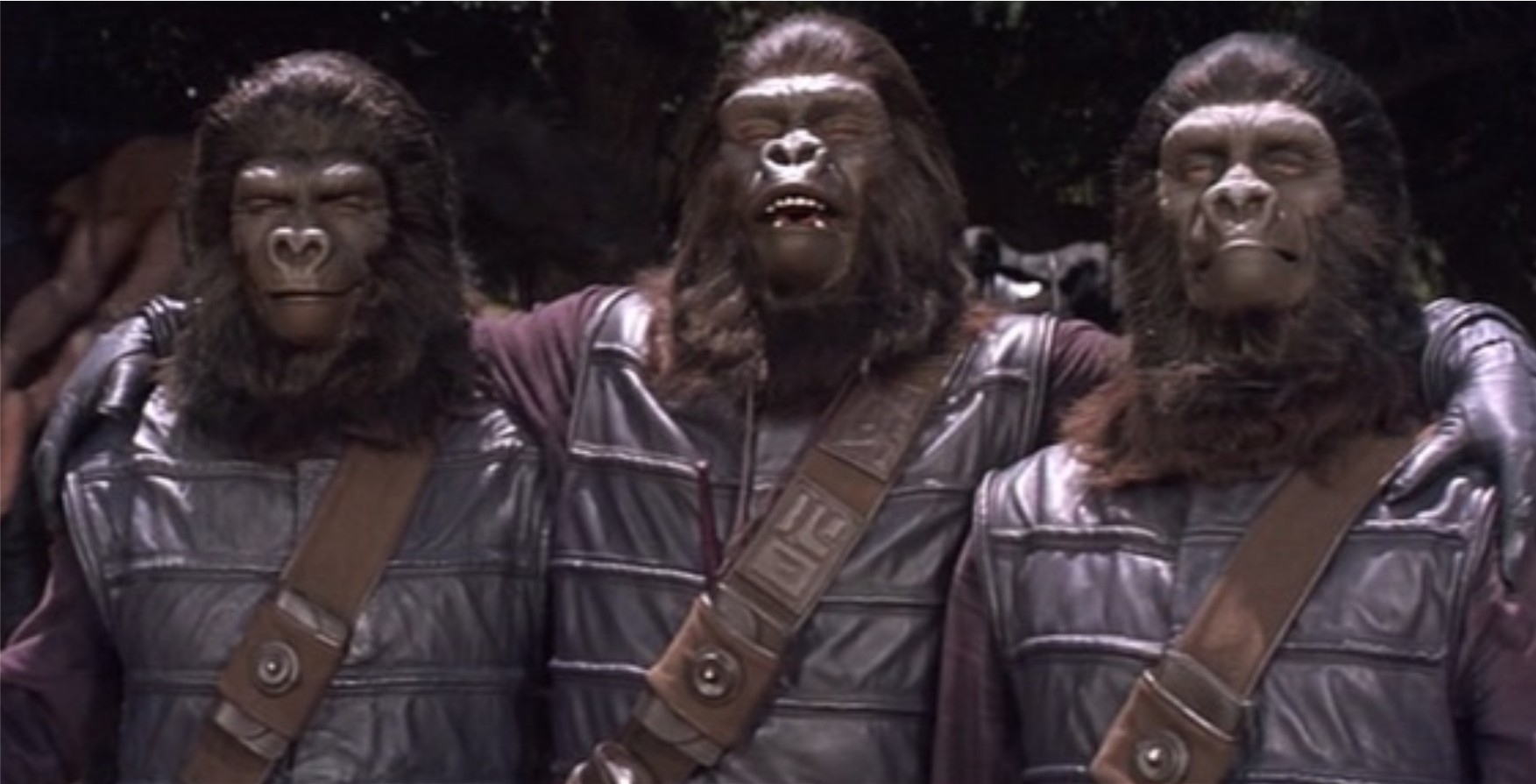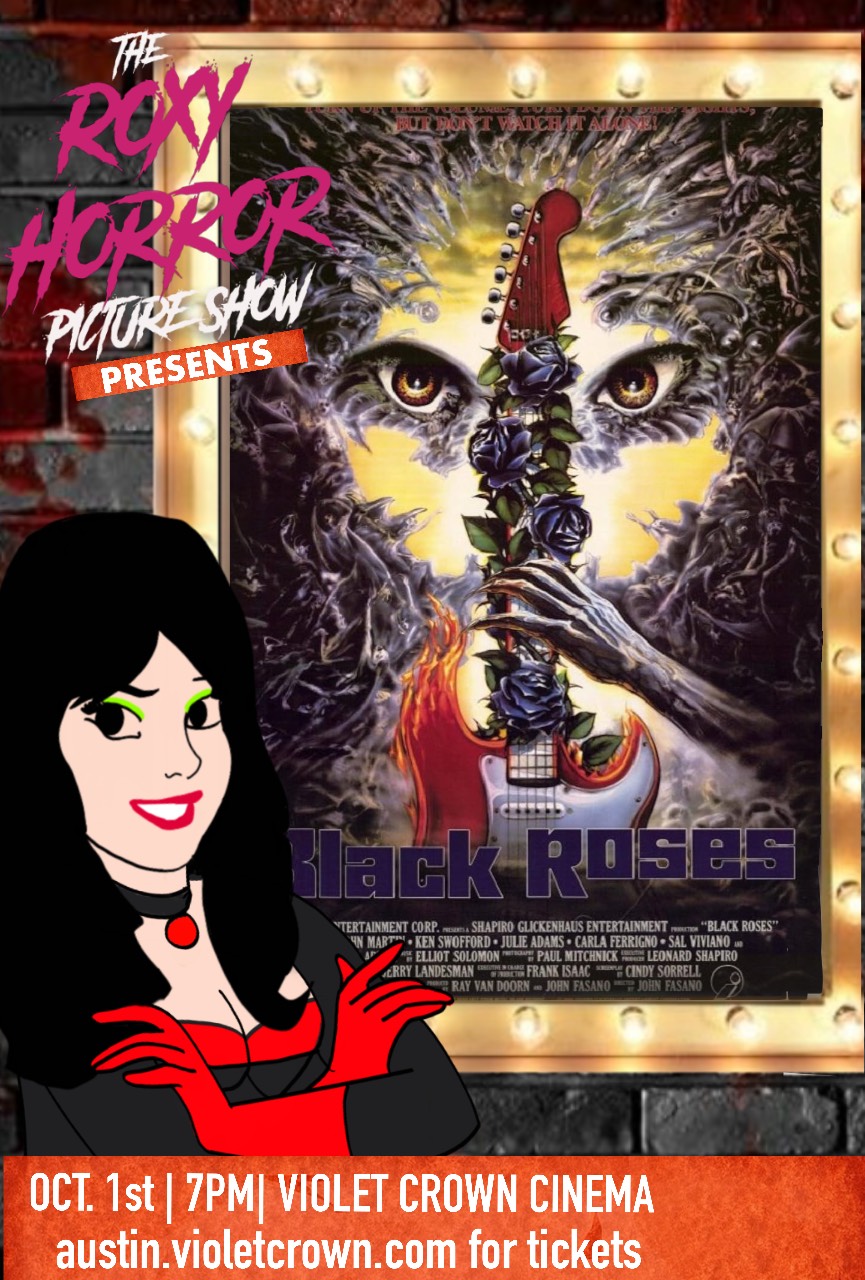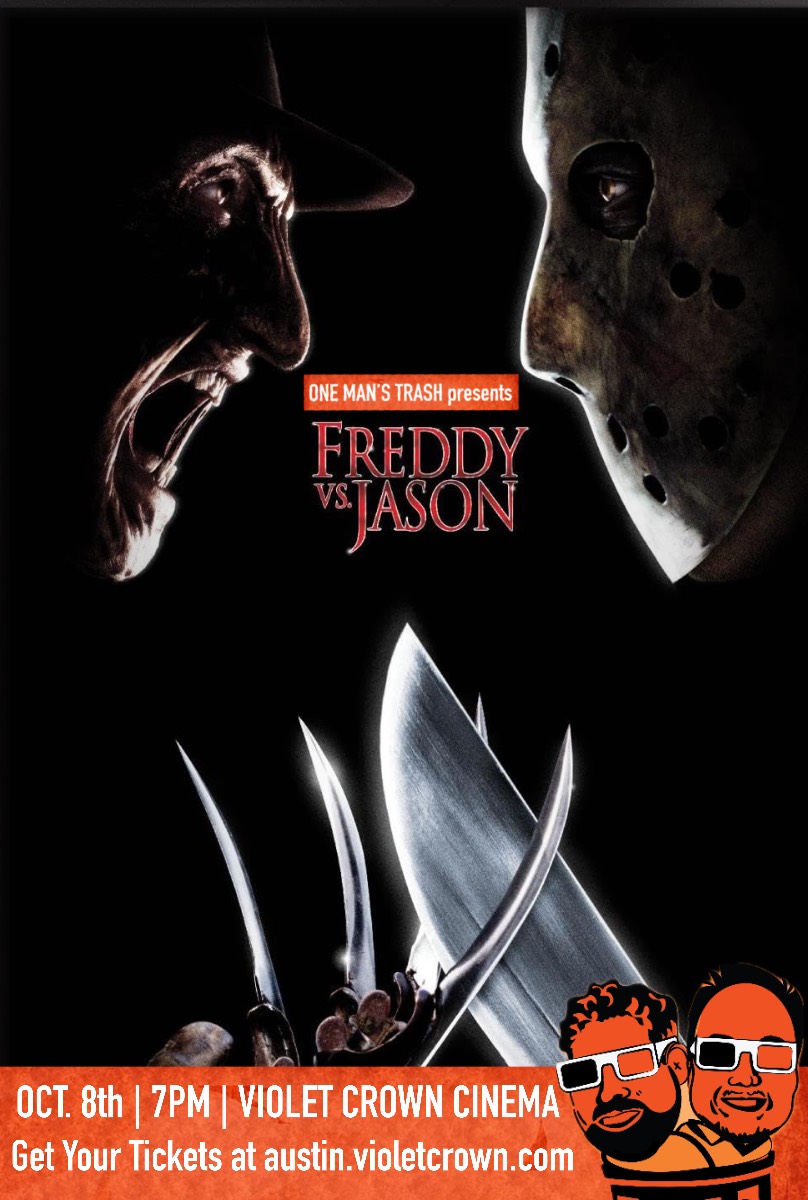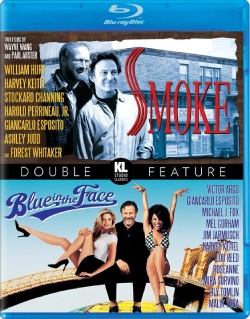Over 45 years after Charlton Heston dug his fists into that beach, The Planet of the Apes is still a film that rings in the public consciousness. The iconic ape make up designs, the highly influential production design of the primitive ape village and the unforgettable Statue of Liberty ending are all still so ingrained in the minds of people… but why?
Out of all the big films to come out of 1968, why is it that Apes and its general media franchise are so well regarded and remembered as part of the pop culture landscape, even with all the advances in technology? Why did the 2011 reboot Rise of the Planet of the Apes become the surprise hit of that summer, resulting in the newest entry Dawn of the Planet of the Apes?
Well, one must first look at the concept. Apes are considered our lesser evolutionary cousins by our society (well… most of our society). Simians are creatures we look down on as inferior primitive versions of ourselves. We laugh at them as they wear clothes and dance for our amusement, whether it be in a circus or in Ronald Reagan’s Bed Time for Bonzo. They are creatures that we mistreated at the time of the original POTA’s production and still continue to mistreat to this day, albeit in a lesser fashion. That mistreatment is ultimately what makes the concept of said Apes not only wearing human like clothing, walking upright and ruling over humans so intriguing, but also makes it somewhat terrifying. It takes everything we as humans have been raised to believe and turns it on it’s head, making us think about the implications of such a society and how it relates to our own human worries and fears, much like any great sci-fi should.
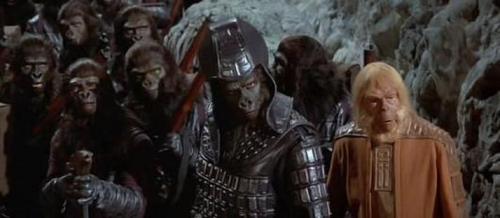
Speaking of human worries and fears, all of the films are very clearly done during the climate of their own times. The first was released in April 1968, a year when the civil rights movement was still in full force and the same weekend of the assassination of Martin Luther King Jr. The scenes of Cornelius and Zira defending Charlton Heston’s Taylor in Dr. Zaius’ court are a plea for acceptance of the new and unconventional in a society that’s mainly run under an old ideology of “The Lawgiver” that doesn’t condone or even willingly acknowledge the existence of an intelligent human. This is obviously a topic that is not only poignant for the era of the civil rights movement, but for any point when authority figures shun the new and unknown. It’s a universal theme that helps keep the film just as relevant as it first was. There’s also the theme of man’s own destructive nature, which ends up giving us a twist on Dr. Zaius and his hatred of man once he reveals the 29th scroll and Heston finds that infamous destroyed Statue of Liberty.
The other films in the franchise also take stabs at social commentary. The second film, Beneath the Planet of the Apes, features a cult of mutated humans that worship a nuclear bomb, continuing to play off the ideas of the first film’s end. There’s also an exploration of the ape factions, particularly the war like gorillas lead by General Ursus (brilliantly played by James Gregory) and how they clash with the more conservatively mindful orangutans as well as the more pacifistic chimpanzees. This is all clearly metaphor for the Vietnam war debates and controversies of the time, right down to the point where the gorillas break up a protest from the chimpanzees. Escape from the Planet of the Apes brought Cornelius and Zira to then contemporary 1973 New York, where they become beloved as novelties before eventually persecuted for their differences, further recalling the themes of racial intolerance.
This is even more pronounced in Conquest of the Planet of the Apes, to the point where Caesar (son of Cornelius and Zira) bluntly compares himself to the one human being who is compassionate to the apes and his African American heritage while leading his fellow apes on an uprising against the oppressive humans. These themes would later be explored far better in the 2011 reboot Rise of the Planet of the Apes, as the Andy Serkis version of Caesar is seen being raised in isolation from humans in order to make the uprise all the more emotionally powerful. Battle for the Planet of the Apes… well, that script is so jumbled that it’s hard to process what exactly it’s going for. Something about ape not killing ape and humans living in harmony with apes… whatever. Point is, most of the films strove for some sort of commentary.

“Very human.”
However, there is more to those films beyond the social commentary. The characters themselves were ones that we could attach to, whether human or ape. Charlton Heston’s Taylor is an asshole who dislikes humanity so much that he goes on a decade long spaceflight, manages to gain a trust in the very human-like evolved apes, only to be proven right for his doubt by the end of the first film. It’s irony steeped in tragedy, a tragedy that would be a recurring part of the very downer ending prone Apes series. One of the best examples is the ending of Escape From The Planet of the Apes, which shows our favorite apes Zira and Cornelius, who found happiness in the past of their Earth only to have it taken away in a bloody shoot out. Caesar’s rise to power in Conquest is initiated by the death of Armando (wonderfully played by Ricardo Montalbon), the lovable circus owner who raised him from birth after the death of his parents. Even some of the villainous characters are somewhat sympathetic, whether it be the justifiably human fearing Dr. Zaius in the original Planet or Dr. Hasslein’s justified fear of intelligent apes in Escape. The emotionally investing stories of all these characters is what helps all of these films survive the potential dated qualities of the time they were made in, sticking with audiences to this day.
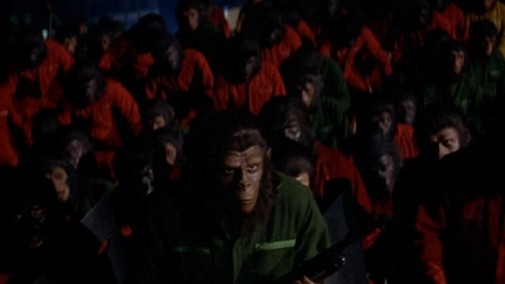
So, that’s is why the Apes franchise thrives in the pop culture consciousness. Even in the decades between Battle and Rise (no, there was no other film in between them. NO. OTHER. FILM.), there were still a lot of references to the original films in countless examples of pop culture. Everything from The Simpsons to Spaceballs to Godzilla vs. Mechagodzilla has paid homage to these films and it’s easy to see why. They twist the nature of man’s dominance over simians, serve as commentary for issues both their initial context & to this day and gave us emotional connections to characters, whether ape or human. Plus, it’s encouraging to know that with the modern reboot craze, the modern day Apes films like Rise and Dawn haven’t lost that focus in character based commentary and have advanced cinematic technology even further to give the ape creatures a sense of realism, much in the same way the filmmakers strived to do all the way back in 1968. That all being said, I think we could all use a different kind of full scale Apes adaptation.
That’s right; a full scale Broadway production of Stop the Planet of the Apes, I Want to Get Off!


